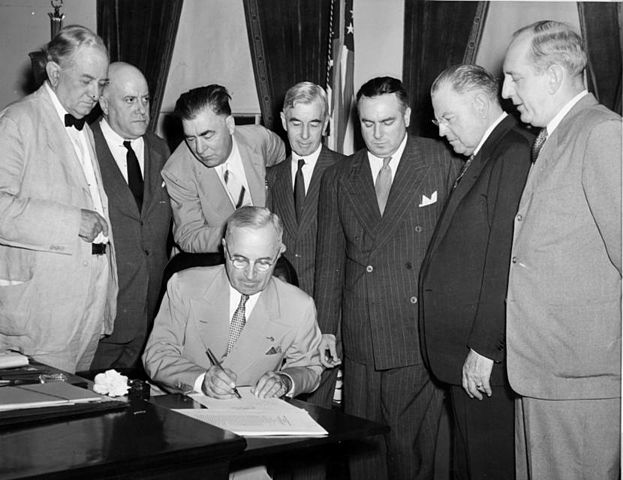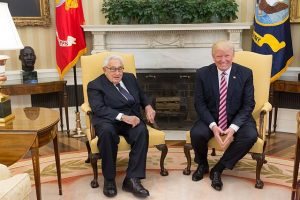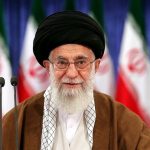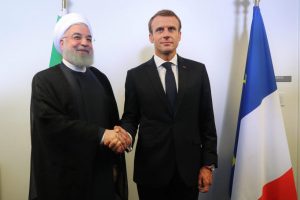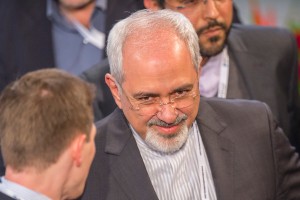Several factors have shaped US policy towards Iran’s nuclear activities. A shifting attitude to the problem posed by dual-use nuclear technologies is one of them. Although this factor has been less apparent than the bitter legacy of Iran’s Islamic Revolution, for instance, or bleats for help from nuclear-armed Israel, it has not been negligible.
Back in 1946, US policy had the virtue of simplicity. The Atomic Energy (McMahon) Act of that year instituted a policy of denial. The Act prohibited US supply of all nuclear equipment and material to other states, even to a war-time ally whose scientists had contributed to the development of the devices dropped on Hiroshima and Nagasaki.
By the mid-50s the shortcomings of this approach had become apparent: both Britain and the Soviet Union had succeeded in developing a dual (civil/military) use nuclear capability without the US having any say in the matter. It dawned on US policy-makers that it might make better sense to switch to a policy of supplying under safeguards.
Central to the concept of nuclear safeguards is the notion of timely detection. Allow American or international inspectors frequent access to civil nuclear facilities, the argument went, and they could provide the US with sufficient warning of nuclear material diversion to enable dissuasive pressure to be applied before the production of weapons.
This thinking bore its finest fruit in 1968, when the Nuclear Non-Proliferation Treaty (NPT) opened for signature. The Treaty specified that parties could have access to nuclear material and equipment, including dual-use fuel cycle technologies, provided that all the nuclear material in their possession was placed under International Atomic Energy Agency (IAEA) monitoring, and provided that they refrained from the manufacture or acquisition of nuclear weapons.
However, within years of the NPT entering into force (1970), US thinking began to shift back towards supply denial. The crystallising moment may well have been the Indian “peaceful nuclear explosion” of May 1974: India used plutonium extracted from reactor fuel supplied under safeguards by Canada. But overt interest in dual-use technologies from states that were not part of the inner circle of trusted US allies and clients — Brazil, Argentina, Iran and Pakistan — contributed to the shift.
In effect, the US set about trying to put bits of the nuclear genie back into its 1946 bottle.
Diplomatically, this presented the US with a huge challenge. States that had adhered to the NPT in the belief that a legally binding non-proliferation commitment and acceptance of comprehensive safeguards would earn them a right to benefit from nuclear technologies, were unhappy to be told that they were mistaken. They chafed at the growing number of export restrictions imposed by the revisionist Nuclear Suppliers Group, formed in 1975. The once club-like IAEA Board of Governors now pits nuclear “haves” against nuclear “have-nots” in sterile antagonism.
Morally, too, the change of tack created problems for the US, a state widely seen as more committed to an ethical foreign policy than any of the leading powers of previous centuries. The US appeared to be going back on its word, promulgating treaty interpretations that were at best disingenuous, and engaging in the application of double standards.
The pity is that this shift occurred before the NPT had time to prove its worth. In the mid-70s people spoke of there being a dozen or more nuclear-armed states (in addition to the five NPT Nuclear Weapon States) by the end of the century; in 2013 there are four nuclear-armed states, and all other states in the world are parties to the NPT.
Ironically, the revisionism on which the US embarked in the mid-70s has developed into a threat to the long-term vitality of the NPT because it saps the commitment of those who perceive themselves to be the victims of discrimination and injustice. Meanwhile revisionism has not prevented the acquisition of dual-use fuel cycle capabilities by Pakistan, Brazil, Argentina, North Korea and Iran (Israel, South Africa and India got out before the US started trying to close the stable door).
All this suggests that a comparative study of global nuclear developments over the last 60 years might well lead to the conclusion that “supply under safeguards” is a wiser, more effective policy than “supply denial”. The insights which underlay the Eisenhower administration’s adoption of “Atoms for Peace” are more pertinent, perhaps, than the instincts that prompt prohibition. “Trust but verify” may provide a better defence against human ingenuity than “distrust and deny”.
Of course this would be a difficult pill to swallow. It seems so obvious that denial is the safer bet. And short-term, no doubt, it is. Longer-term denial, however, is likely to prove ineffective (vide above) and to breed resentment, if not animosity; whereas “supply under safeguards” assures a basis for influencing the calculations of the recipient state and keeps open a wider range of options. “Supply under safeguards” better accords with the idea that the crucial element in threat equations is motivation, not capability.
I wonder whether any of these considerations have weighed in P5+1 minds as they prepare for further talks with Iran.
Photo: President Harry Truman signs the Atomic Energy Act on August 1, 1946. Source: DOE/Wikipedia Commons

